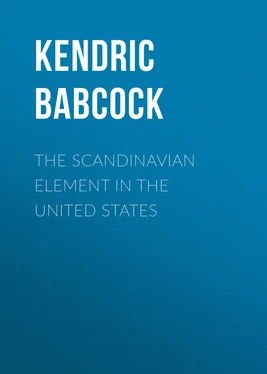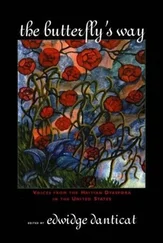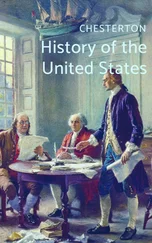Kendric Babcock - The Scandinavian Element in the United States
Здесь есть возможность читать онлайн «Kendric Babcock - The Scandinavian Element in the United States» — ознакомительный отрывок электронной книги совершенно бесплатно, а после прочтения отрывка купить полную версию. В некоторых случаях можно слушать аудио, скачать через торрент в формате fb2 и присутствует краткое содержание. Жанр: foreign_antique, foreign_prose, на английском языке. Описание произведения, (предисловие) а так же отзывы посетителей доступны на портале библиотеки ЛибКат.
- Название:The Scandinavian Element in the United States
- Автор:
- Жанр:
- Год:неизвестен
- ISBN:нет данных
- Рейтинг книги:5 / 5. Голосов: 1
-
Избранное:Добавить в избранное
- Отзывы:
-
Ваша оценка:
- 100
- 1
- 2
- 3
- 4
- 5
The Scandinavian Element in the United States: краткое содержание, описание и аннотация
Предлагаем к чтению аннотацию, описание, краткое содержание или предисловие (зависит от того, что написал сам автор книги «The Scandinavian Element in the United States»). Если вы не нашли необходимую информацию о книге — напишите в комментариях, мы постараемся отыскать её.
The Scandinavian Element in the United States — читать онлайн ознакомительный отрывок
Ниже представлен текст книги, разбитый по страницам. Система сохранения места последней прочитанной страницы, позволяет с удобством читать онлайн бесплатно книгу «The Scandinavian Element in the United States», без необходимости каждый раз заново искать на чём Вы остановились. Поставьте закладку, и сможете в любой момент перейти на страницу, на которой закончили чтение.
Интервал:
Закладка:
But the New Norway, or the New Scandinavia, was not to be located in the Middle Atlantic States, though a beginning was made in Delaware and in New York. Land was too dear around the older settlements even at $5 per acre; the promised land was shifted to northern Indiana and northern Illinois, where fine prairie tracts which needed no clearing could be had for $1.25 per acre and upwards. And into these newer regions went the settler and the land speculator, sometimes in one and the same person. Schemes for internal improvement sprouted on every side, and canal-building was much discussed as the best means of providing cheap transportation. 37 37 Ackerman, Early Illinois Railroads (No. 23, Fergus Hist. Ser. ), 19, quoting an editorial from the Sangamo Journal , Oct. 31, 1835: “We rejoice to witness the spirit of internal improvement now manifesting itself in every part of Illinois.”
One of these projects was for a canal from Lake Michigan to the Illinois River, for which a land grant was made in 1827. This canal would bring great prosperity to northern Illinois, it was argued, just as the Erie Canal had developed central and western New York; the price of land would go up, markets would be accessible, and speculator and farmer would reap rich rewards.
Nor was this argument based entirely on theory, for halfway to the East, in Indiana, this progressive realization was in full blast. Harriet Martineau travelled through this part of the West in 1836, and noted with the eye of an acute and experienced observer, the rapid rise in values of farms. She estimated that a settler, judiciously selecting his land in the Northwest, would find it doubled in a single year, and cites the case of a farmer near LaPorte, Indiana, whose 800 acres, costing him $1.25 per acre three years before, had become worth $40 per acre – probably not a unique example of prosperity. 38 38 Martineau, Society in America , I, 247, 259, 336.
With these visions before them, many men moved from western New York, and along the line of the proposed canal in Illinois grew up hamlets bearing the names familiar along the great Erie Canal, – Troy, Seneca, Utica, and Lockport.
Among those attracted thither, was Kleng Peerson, who again served, perhaps without deliberate planning, as a scout for his Quaker friends. 39 39 “I have complete evidence that he visited La Salle County, Illinois, as early as 1833.” Anderson, Norwegian Immigration , 172.
On his return to the Orleans County settlers, he convinced them that a better future would open to them in Illinois, and in the spring of 1834 some of the families moved into the West and began the so-called Fox River settlement in the town of Mission near Ottawa, La Salle County, Illinois. By 1836 nearly all the Norwegians of the New York colony had removed to the West, and several tracts of land were taken up in the towns of Mission, Miller, and Rutland. The sections located seem to have been unsurveyed at the time of the first settlement, for no purchases are recorded until 1835. 40 40 Ibid. , 174, 176 ff.
Henceforth most of the immigration from Norway was turned toward the prairie country, and whole companies of prospective settlers after 1836 went directly to the Fox River nucleus, for the region thereabouts had the double advantage of being at once comparatively easy of access and in the most fertile and promising region in which government land could be had at the minimum price.
In its new location, the twice transplanted colony of “Sloop Folk” was reasonably prosperous from the start, tho the panic of 1837 made impossible any realization of Miss Martineau’s roseate estimate of probable profits. No further move of the original immigrants was made, and the Fox River Valley is still occupied by the well-to-do descendants of the Norwegian settlers of the thirties.
As a preliminary to further immigration from the three countries of Northern Europe, a definite knowledge of America and its opportunities must be developed among the peasants, and a desire to remove themselves thither must be awakened and stimulated. To whole communities in Norway, made up of simple, circumscribed people, America about 1835 was an undiscovered country, or at best a far-off land from which no traveller had ever come, and from which no letters were received; the name itself, if known at all, was a recent addition to their vocabulary. Ole Nattestad, one of the early immigrants, who was decently educated for his time and more experienced in the world than the majority of his neighbors, relates how he first heard of America in 1836, when he was a man thirty years old. 41 41 Billed Magazin , I, 83.
The leavening process went on but slowly from 1825 to 1836, for the story of the early experiences of the little company of dissenters, obscure persons from an obscure parish, if known at all, was not likely to inspire others to follow in large numbers. With increasing prosperity in the Rochester, and later in the Fox River, colony, the tone of letters sent back to friends in Norway took a new ring: America came to mean opportunity, and now there were men speaking the Norwegian tongue to whom newcomers might go for instruction, advice, and encouragement. Old settlers still bear witness to the great influence of these letters of the thirties telling of American experiences and of American conditions. Among the most influential of these semi-conscious propagandists of emigration was Gjert G. Hovland, who came to the Rochester settlement with his family in 1831, and bought fifty acres of land, which after four years of cultivation he sold at a profit of $500. Writing to a friend near Stavanger in 1835, he spoke in terms of high praise of American legislation, equality, and liberty, contrasting it with the extortion of the Norwegian official aristocracy. He counseled all who could to come to America, as the Creator had nowhere forbidden men to settle where they pleased. 42 42 Translated from Langeland, Nordmændene i Amerika , 16n. This writer summarizes a letter of which he saw a copy as a young man in Norway.
Of this and other letters by Hovland, copies were made by the hundred and circulated in the Norwegian parishes, and many of the early immigrants have stated that they were induced to emigrate by reading these letters. 43 43 Ibid. ; Anderson, Norwegian Immigration , 147.
Another man whose words prompted to emigration, was Gudmund Sandsberg, who came to New York in 1829 with a family of four. 44 44 Anderson, Norwegian Immigration , 133.
These letters scattered through western Norway from 1830 to 1840, were as seed sown in good ground. Times were hard; money was scarce and its value fluctuating. 45 45 Billed Magazin , I, 18-19. Of the year 1836, one writer asserts: “En Daler ei gjældt mere end to norske Skilling,” and that many lost all their property.
The crops were often short, the prices of grain were high, and the demand for the labor of the peasants was weak; the economic conditions of the lower classes, especially in the rural districts – much the greater part of the country – were growing worse rather than better. 46 46 In Anderson, Norwegian Immigration , 133-135, is a translation of a letter written in Hellen in Norway, May 14, 1836: “If good reports come from them (certain emigrants about to sail) the number of emigrants will doubtless be still larger next year. A pressing and general lack of money enters into every branch of business, stops, or at least hampers business, and makes it difficult for many people to earn the necessaries of life. While this is the case on this side of the Atlantic, there is hope of abundance on the other, and this, I take it, is the chief cause of this growing disposition to emigrate.”
Even the oldest son, who was heir to his father’s homestead, was likely to find himself possessed of a debt-burdened estate and with the necessity of providing for the mother and numerous younger children. 47 47 Billed Magazin , I, 6 ff.
The younger sons, being still worse off, were forced to try their hands at various occupations to earn a bare living. Ole Nattestad, already mentioned, was by turns before his emigration farmer, peddler, blacksmith, and sheep-buyer. 48 48 Ibid. , I, 83.
To many a man with a large family of growing children the possibility of disaster in the United States was less forbidding than the probability of ultimate failure in Norway.
Интервал:
Закладка:
Похожие книги на «The Scandinavian Element in the United States»
Представляем Вашему вниманию похожие книги на «The Scandinavian Element in the United States» списком для выбора. Мы отобрали схожую по названию и смыслу литературу в надежде предоставить читателям больше вариантов отыскать новые, интересные, ещё непрочитанные произведения.
Обсуждение, отзывы о книге «The Scandinavian Element in the United States» и просто собственные мнения читателей. Оставьте ваши комментарии, напишите, что Вы думаете о произведении, его смысле или главных героях. Укажите что конкретно понравилось, а что нет, и почему Вы так считаете.












